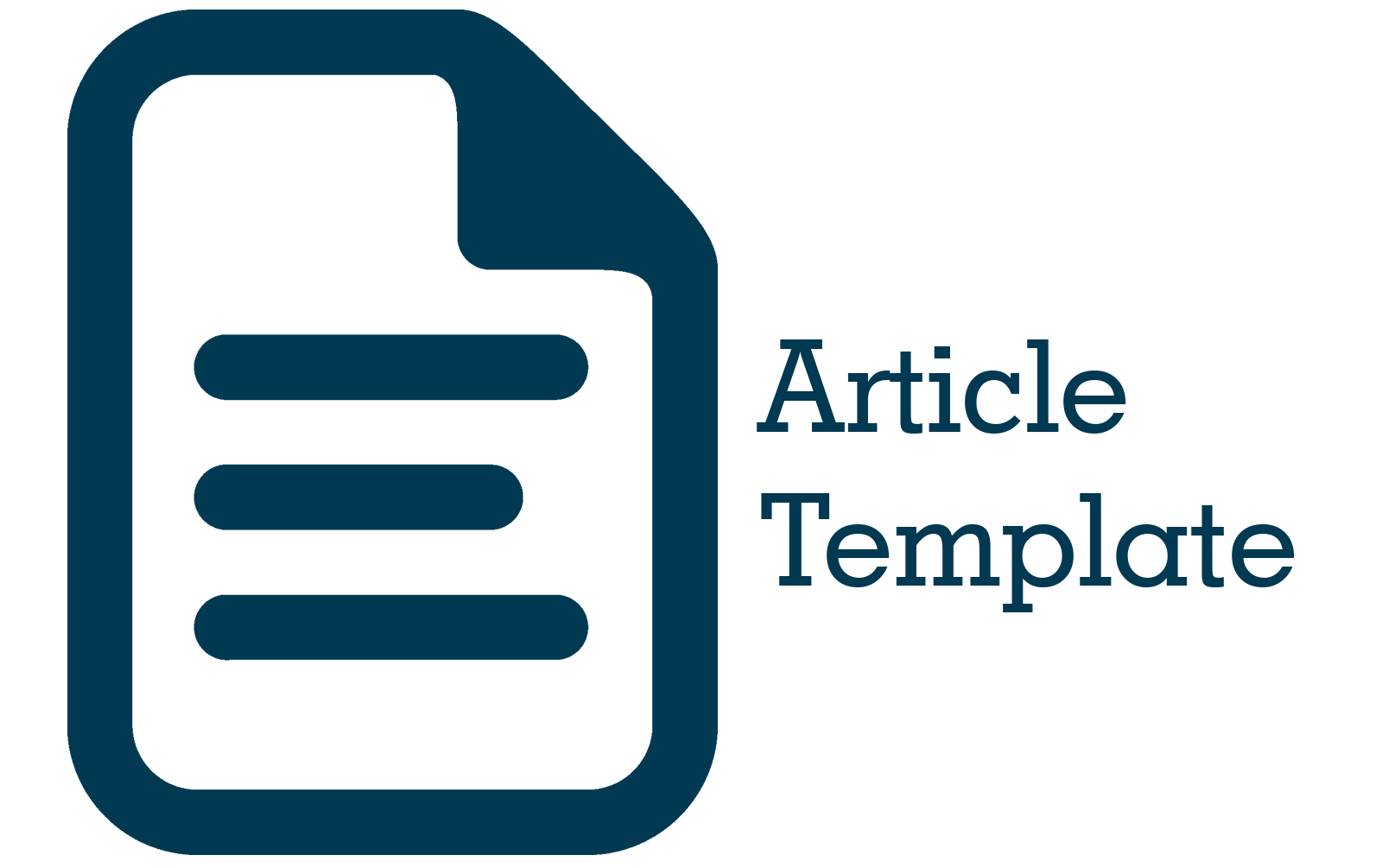Penerapan Diagram Kendali Multivariate Exponentially Weighted Moving Average (MEWMA) dalam Mengontrol Kualitas Air PDAM
Abstract
Abstract. Statistical quality control is the application of statistical techniques in controlling a process that is useful for achieving process stability and increasing ability through reducing quality variability. Tools for quality control, one of which is the control chart. In practice, control charts often used in univariate cases are Shewhart, Cumulative Sum (CUSUM) and Exponentially Weighted Moving Average (EWMA). However, when there is more than one quality characteristic (mutivariate characteristics), simultaneous control is required. The thesis discusses the Multivariate Exponentially Weighted Moving Average (MEWMA) control chart procedure. The uniqueness of the MEWMA control chart is that it is robust to normal which means that if the data used is not normally distributed, then the MEWMA control chart can still be done. MEWMA control chart will be used to control PDAM Water Quality. The data used is the quality of customer drinking water in January-February 2022 Perumda Tugu Tirta Drinking Water Malang City which amounted to 50 observations with 5 characteristics observed including pH, nitrite, iron (Fe), manganese and residual chlorine (Cl2). Based on the results of MEWMA analysis shows that it is in a statistically uncontrolled condition because for weighting 0.2, 0.3, 0.4, 0.5, 0.6, 0.7, 0.8 and 0.9 there are observations that are beyond the control limit, namely in the 46th observation. As well as the optimum weighting selected, namely weighting 0.2. The results of detection of out-of-control causal variables using the EWMA control chart showed 1 variable had an out-of-control observation at the 46th observation, namely at Manganese levels.
Abstrak. Pengendalian kualitas Statistik merupakan aplikasi dari teknik statistik dalam pengendalian suatu proses yang berguna untuk mencapai stabilitas proses dan meningkatkan kemampuan melalui pengurangan variabilitas mutu. Alat bantu untuk mengendalikan kualitas, salah satunya adalah diagram kendali. Dalam praktiknya, diagram kendali yang sering digunakan dalam kasus univariat adalah Shewhart, Cumulative Sum (CUSUM) dan Exponentially Weighted Moving Average (EWMA). Namun ketika terdapat lebih dari satu karakteristik mutu (karakteristik mutivariat), maka pengontrolan secara simultan diperlukan. Dalam skripsi dibahas prosedur diagram kendali Multivariate Exponentially Weighted Moving Average (MEWMA). Keunikan diagram kendali MEWMA yaitu bersifat robust terhadap normal yaitu apabila data yang digunakan tidak berdistribusi normal, maka diagram kendali MEWMA masih bisa dilakukan. Diagram kendali MEWMA akan digunakan untuk mengontrol Kualitas Air PDAM. Data yang digunakan yaitu kualitas air minum pelanggan pada bulan Januari-Februari 2022 Perumda Air Minum Tugu Tirta Kota Malang yang berjumlah 50 pengamatan dengan 5 karakteristik yang diamati diantaranya pH, nitrit (NO2), besi (Fe), Mangan dan sisa klor (Cl2). Berdasarkan hasil analisis MEWMA menunjukan berada dalam kondisi tidak terkendali secara statistik karena untuk pembobot 0.2, 0.3, 0.4, 0.5, 0.6, 0.7, 0.8 dan 0.9 terdapat pengamatan yang berada diluar batas kendali, yakni pada pengamatan ke-46. Serta pembobot optimum yang dipilih yaitu pembobot 0.2. Hasil deteksi variabel penyebab out-of-control menggunakan diagram kendali EWMA menunjukkan 1 variabel memiliki pengamatan out-of-control pada pengamatan ke-46 yaitu pada kadar Mangan.
References
Arsyad, S. (1989). Konservasi Tanah dan Air. IPB Press. Bogor.
Effendi, H. (2003). Telaah Kualitas Air Bagi Pengelolaan Sumber Daya dan Lingkungan Perairan. Kanisisus. Yogyakarta.
Hignasari, L., V. (2020). Tinjauan Teoritis Pengendalian Kualitas Produk Hasil Industri dengan Metode Statistik. Jurnal VASTUWIDYA, 3 (1)
Hotelling, H. (1947). Multivariate Quality Control. Techniques of Statistical Analysis. Eisenhart, Hastay and Wallis (eds.) McGraw-Hill, New York
Lowry, C. A. W. Woodall, C. W., Champ & S.E. Rigdon. (1992). A Multivariate Exponentially Weighted Moving Average Control Chart, Technometrics, 34: 46-53
Maulidiyah, H. (2022). Penerapan Grafik Pengendali Multivariate Cumulatif Sum (MCUSUM) dan Kapabilitas Proses pada Pengendalian Kualitas Air PDAM . Skripsi Dipublikasikan. Malang: Fakultas Sains dan Teknologi, Universitas Islam Negeri Maulana Malik Ibrahim
Montgomery, D.C. (1990). Pengantar Pengendalian Kualitas Statistik. Yogyakarta: Universitas Gadjah Mada.
Montgomery, D.C. (2005). Introduction to Statistical Quality Control 5th Edition. New York: John Wiley & Sons.
Montgomery, D.C. (2009). Statistical Quality Control, Sixth Edition Singapore: John Wiley & Sons.
Pan X., Jarrett J.E. (2014). The Multivariate EWMA Model and Health Care Monitoring, International Journal of Economics and Management Sciences, 3(2):176.
Prabhu, S. S., and G. C. Runger. (1997). Designing a Multivariate EWMA Control Chart, Journal of Quality Technology, 29 (1): 8–15.
Sahoo, P. (2013). Probability And Mathematical Statistics. Louisville: University of Louisville
Stoumbos, Z. G., & Sullivan, J. H. (2002). Robustness to Non-Normality of The Multivariate EWMA Control Chart. Journal of Quality Technology , 260.
Vargas, V., Lopes, L. & Souza, A. (2004). Comparative Study of The Performance of The CUSUM and EWMA Control Charts. Computers and, Industrial Engineering, 46: 707-724..
Azizah, N. (2023). Pemodelan Spatial Autoregressive (SAR-X) pada Perkawinan Usia Anak di Indonesia. Jurnal Riset Statistika, 1–10. https://doi.org/10.29313/jrs.v3i1.1643
Nugroho, D. A., & Suwanda. (2022). Diagram Kontrol T2 Hotelling Minimum Volume Ellipsoid (Penerapan pada Pengontrolan Fluktuasi Saham). Jurnal Riset Statistika, 20–27. https://doi.org/10.29313/jrs.vi.718
Zain, P. R., & Yanti, T. S. (2022). Penerapan Multidimensional Scaling terhadap Pengelompokkan Provinsi Berdasarkan Indikator Tujuan ke-6 SDGs. Jurnal Riset Statistika, 153–160. https://doi.org/10.29313/jrs.v2i2.1465











